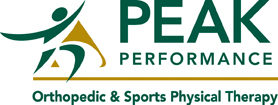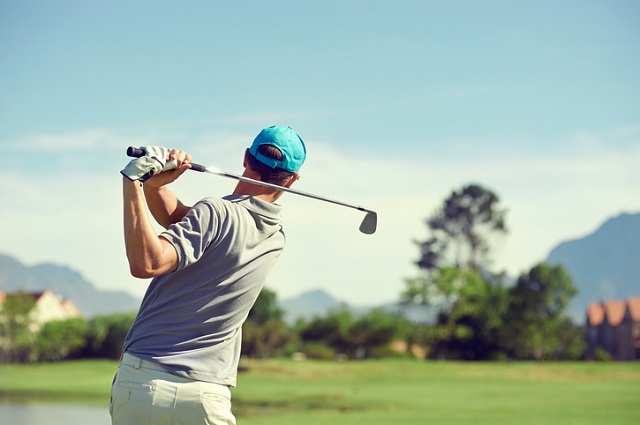What type of injuries are common in golf?
Why does my back hurt after golf?
Why does my shoulder hurt after golf?
Why does my elbow hurt after golf?
How do I prevent golf injuries?
As the snow and ice melts and temperatures begin to warm, there will be between 55-57 million golfers worldwide starting to make their way to the driving ranges and golf courses. Although golf is considered by many to be a recreational non-contact sport, injuries are fairly common. Golf is considered a “moderate injury risk” sport with a prevalence rate between 25-60% for amateur players. Approximately 40% of amateur golfers will sustain a golf related injury every year, while injury rates vary between 1.2-1.3 per year.
The golf swing is a highly complex series of integrated motions which involve most of the major muscle groups and joints of the body which transfers power from the upper extremities (arms), through the core (trunk), to the lower extremities (legs) which are firmly planted on the ground. A proficient golf swing requires a high level of execution, coordination, and power. The club head speed generates high velocities during a brief time (1.5 sec for amateurs, 1.2 for professionals) which contribute to high biomechanical stress on the body. Studies have shown that significant compressive and shearing forces are produced that are highly ballistic and explosive, which are not intended for the human body.
Lower back injuries are most common in golf, accounting for 15-34% of all injuries for amateur players. The golf swing comprises high forces to the lumbar spinal segments, above levels of biomechanical tolerance of the supporting structures (i.e. ligaments, tendons, intervertebral disc). Among amateur men, low back pain (LBP) accounts for 36% of all injuries; in women, LBP accounts for only 12%. In amateur players, the lumbar spine is under greater peak compressive loads shown to be 8 times the body weight. LBP is correlational to decreased static trunk strength, delayed trunk/core muscle recruitment and diminished trunk/core endurance which contributes to injury.
Elbow/forearm injuries (i.e. Golfer’s elbow or tennis elbow) are second most common, accounting for 7-27% of all golf related injuries and are more common in amateur players. 85% of elbow injuries involve the outer elbow (lateral epicondyle). These types of overuse injuries are often produced from gripping the club too tightly and having inconsistent technique. A sudden deceleration of the club head (i.e. hitting the turf) is a more common mechanism to injure the inner elbow (medial epicondyle).
Shoulder injuries are the third most common, accounting for 4-19% of all golf related injuries. Common injuries include shoulder impingement, rotator cuff tendinitis, and posterior shoulder instability/subluxation. Overuse injuries to the shoulder occur when relatively weak rotator cuff muscles are fatigued through excessive repetition. During the golf swing, the shoulder is exposed through a large range of motion. During the backswing, in a right-handed golfer, the lead shoulder is placed into maximum horizontal adduction (found to produce the significant force across the AC joint), while the trailing shoulder is placed into maximum external rotation. The opposite occurs during the follow through. The rotator cuff muscles undergo significant force during the uncoiling phase of the down swing (lead shoulder) while the follow through (trailing shoulder) is at risk of impingement. The leading shoulder is most affected by injury.
The majority of golf injuries occur during the late down swing (ball impact and follow through phases of the swing). The follow through accounts for 42% of all injuries while the late down swing and ball impact account for 18%. Injuries are prominent during these phases because the human body harnesses the highest amount muscular activity than any other phase. The back swing emphasizes flexibility and coiling the muscular springs to store power, while the downswing generates power that requires muscular strength of your torso, pelvis, and arms. The follow through generates even more torque due to eccentric contraction of the muscles to slow your body’s rotation of the torso and arms. Studies have shown that younger or more skilled players have more trunk mobility and therefore utilize less muscular activity; while older or less skilled players have up to 50% less trunk rotation which contributes to higher compensatory muscular activation.
There are three main contributing factors that affect golf injuries: overuse, faulty swing mechanics, and poor training habits or fitness level. Overuse injuries are more common in competitive players and usually involve soft tissue structures such as muscle, tendon, and ligaments. These types of injuries are caused by short periods of intense play or high number of practice hours. Repetitive use often produces muscle imbalances which contributes to overuse injuries. One study found significantly more injuries in golfers who played four rounds a week or who hit at least 200 balls in one week. Faulty swing mechanics are more typical in the amateur players. Common flaws include “over-swinging” the club, swinging harder or faster than appropriate, deficiencies in swing technique, improper grip technique, and postural compensation. Poor training habits or fitness levels are the most common factors to golf injury that can be readily prevented by self-intervention. Examples of poor training habits/fitness levels include lack of warm-up, reduced mobility and flexibility, lack of strength and stability, and lack of aerobic conditioning. Many amateur golfers play without warm-up of any kind and are in poor physical condition. One study found that 81% of amateur golfers did not warm-up for more than 10 minutes prior to playing a round of golf. Another study found more than 50% of the sample did not perform any warm-up prior to practice or play and fewer than 3% of the golfers were considered to have warmed-up appropriately.
There are several ways to improve your golf game and lower your risk of injury. Golf is seasonal in many parts of the country, so rest periods are dependent upon weather/climate. However, in many parts of the country, golf can be played year round, therefore it is recommended to take 4-6 weeks off after 6 months of play. Rest is important and is essential for recovery and adaptation. Golf fitness is important year round and not just during the non-golfing months. A golf fitness program should be comprised of three components: flexibility, strengthening, and aerobic conditioning. The benefits of a flexibility program allows for a more fluid swing, improves back swing limits, allows for full follow through, improves muscle coordination, and most importantly reduces injury. The emphasis of a flexibility program should target the hips/pelvis, torso, shoulder, and forearms. The golf swing uses all major muscle groups in the body, both large and small. A strengthening program should include exercises to improve power, and should target multiple joint large-muscle groups and single joint small muscle groups. Focus should also be placed on core musculature of the torso, hips/pelvis, and shoulder girdle. Aerobic conditioning should also be an emphasis to improve cardiovascular endurance. The average course is > 3 miles and often a course terrain can challenge your endurance.
Finally, golf preparation should incorporate all aspects of practice. This would include putting, short game, intermediate game, and long game. Incorporating and practicing all aspects of your game will allow your body rest from certain elements of the game and will protect your body from overuse, minimizing the repeated stress/strain to your muscles and joints. Proper warm up program should start with 10-15 minutes of light aerobic activity to increase blood flow/warm up muscles. From there, progress to a stretching program for shorter durations 10-15 sec followed by ballistic/functional stretching. Lastly, a sequential golf club warm up is also advised which should include wedges/short irons, mid irons, woods/driver, and putting. Nearly 50% of all amateur/recreational golfers do not warm up prior to play or practice. Only 3% of amateur golfers participate in proper warm-up. A warm-up program has been shown to reduce the risk of injury by up to 60% risk of injury. The most neglected part of any fitness program or sports participation is the cool down. It is important to repeat the stretching program but using longer and sustained holds closer to 30-40 sec. The muscles and joints will stretch better after being sufficiently warmed up after the sports activity. Stretching after activity has also been shown to reduce inflammation and minimize post-activity muscle soreness often accompanied with exercise.
In summary, golf injuries are prevalent in both amateur and professional golfers. Golf injuries occur from overuse, improper training, poor swing technique and commonly affect the lower back, elbow, and shoulder. Warm up and fitness training are essential to prevent injuries and fitness training should focus on rotational flexibility, dynamic core strength/stabilization, and aerobic conditioning. Consider a consultation with a physical therapist who has expertise in golf fitness to give you guidance.
Stay healthy and keep it in the fairway!


